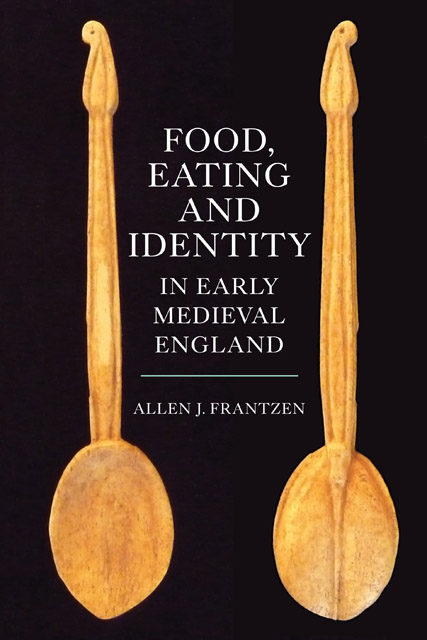7 - Food Objects in Wood
Published online by Cambridge University Press: 14 February 2023
Summary
The Anglo-Saxons lived in wood, sat on it, and ate and drank from it. Food was eaten from bowls and platters with wooden spoons, stored in jars and cooked in pots, some with wooden lids. Even feasters, as we know from the feast of Isaac’s weaning in the Old English Heptateuch (Genesis 21:8), drank from wooden cups. Households used wooden troughs for kneading bread and employed butter churns, trays, baskets, and other tools and containers made of wood. From hall to hut, tub to trough, bowl to barrel, wood was the most pervasive medium of their age. It is probable that most Anglo-Saxons used food objects in wood more often than they used pottery.
It is a paradox, then, that wooden artifacts are extremely rare among Anglo-Saxon finds. Almost all the wood that survives from early medieval England comes from York, where waterlogged, anaerobic soil conditions at three excavations – Coppergate, Bedern, and 22 Piccadilly – were well suited to the preservation of wooden objects. The finds have been used to establish continuous occupation for well-defined, extended periods of Anglo-Scandinavian York, ranging from about 900 to 930, 930 to 975, and 975 to the early eleventh century. Although spoons and spatulas, buckets and barrels, and wooden handles for iron implements have been found in various settlements, the evidence from York, some 1,500 wooden objects, is unique. According to Carole A. Morris, herself a woodworker, “No site in the rest of the world has yielded such rich and varied evidence of this important craft.” Only Dublin, another Viking settlement, produced comparable finds in wood; according to Morris, most of them remain unpublished. She describes the objects from York as “the tip of an enormous wooden iceberg,” the rest of which has vanished.
Wood carving, along with ironwork and pottery making, was a common activity in Anglo-Saxon settlements. Like most domestic and agricultural tasks, woodworking began far from craft centers and depended on iron tools. Industrial woodworking required that trees be felled and processed into planks and blocks for further sizing and shaping. The Domesday Book records woods as the resources of manors and their lords, but Julian Munby points out that trees were also found on common lands to which peasants would have had some access for making hedges and houses.
- Type
- Chapter
- Information
- Food, Eating and Identity in Early Medieval England , pp. 156 - 174Publisher: Boydell & BrewerPrint publication year: 2014



